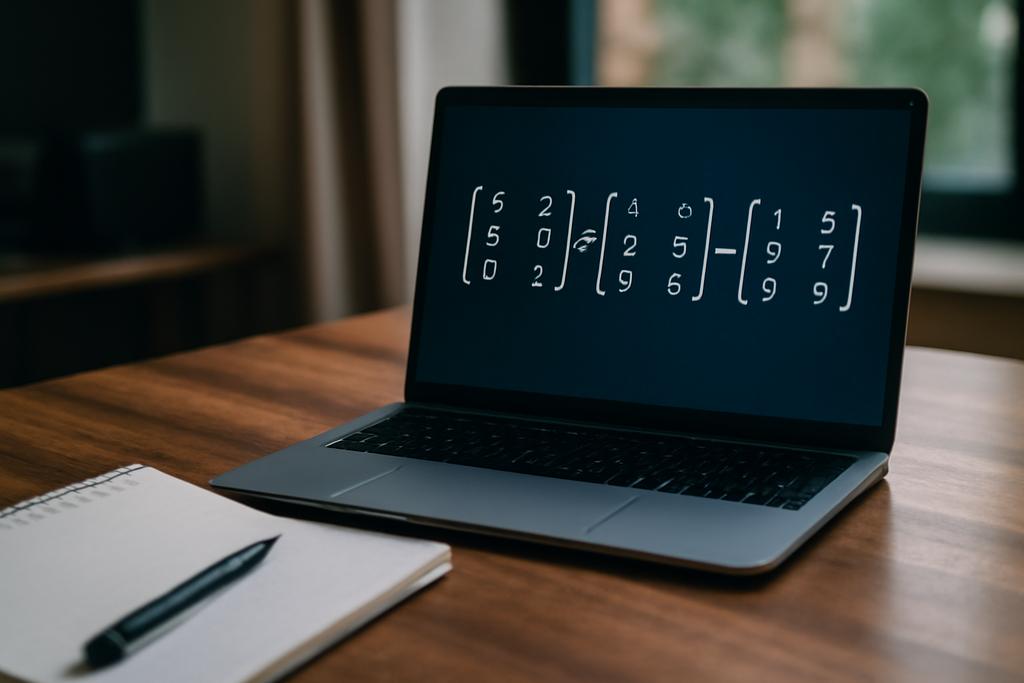Ever feel like computers are just… slow? We’re constantly pushing them to do more, faster, from rendering the latest games to training those AIs that are writing (or at least inspiring) articles like this one. And at the heart of so many of these tasks lies matrix multiplication – a fundamental operation that’s been the target of relentless optimization for decades.
Matrix multiplication is so common in computing, from scientific simulations to machine learning, that even tiny speed improvements can ripple outward, saving energy, time, and ultimately, money. Think of it as finding a slightly faster route for millions of delivery trucks: each truck saves a little, but the total savings become enormous.
Pan’s Legacy: A 40-Year Reign
For “feasible” matrix sizes – those that fit comfortably on today’s computers – one algorithm has reigned supreme for over 40 years: that of Victor Pan. Feasible algorithms are ones that can actually run on hardware in the real world, rather than requiring base matrix sizes so large that they’re purely theoretical. Pan’s method, developed in 1982, wasn’t the absolute fastest *in theory*, but it was the fastest for matrices you’d actually encounter in practice. Until now.
Researchers at the Hebrew University of Jerusalem have just announced a new algorithm that, for the first time, beats Pan’s in terms of speed for these practical matrix sizes. The work, led by Oded Schwartz and Eyal Zwecher, introduces a novel approach to trilinear aggregation, a core technique in fast matrix multiplication.
Trilinear Aggregation: A Sneaky Shortcut
So, what is trilinear aggregation, and how does it work? Imagine you’re trying to calculate the total cost of several items, where each item has a price, a quantity, and a tax rate. Instead of multiplying each item’s price, quantity, and tax individually and then summing the results, trilinear aggregation looks for clever ways to combine terms and reuse calculations, minimizing the total number of multiplications needed.
It’s like finding shortcuts in a complex calculation, where you realize some intermediate values appear multiple times. Instead of calculating them from scratch each time, you calculate them once and reuse the result. When applied to matrix multiplication, this involves strategically combining elements of the matrices in a way that minimizes the number of individual multiplications needed to compute the final product.
De Groote Equivalence: Finding Hidden Twins
The new algorithm builds upon Pan’s by identifying and exploiting “kin” rows in the encoding and decoding matrices. Think of these as nearly identical twins in a mathematical structure. The researchers accomplish this by using what’s called de Groote equivalence to replace sections of the algorithm, optimizing it in a way that allows for more efficient uniting of rows and further multiplication reduction.
The de Groote equivalence essentially means that while two algorithms might look different on the surface, they’re fundamentally the same, just expressed in a different way. It’s like saying that 2 + 2 and 1 + 3 are different expressions but yield the same result. The new approach leverages this equivalence to rewrite parts of Pan’s algorithm, making these “kin” rows appear. Once these rows are identified, they can be united, reducing the number of multiplications needed.
Why This Matters (Even If It’s Complicated)
While the details might seem arcane, the implications are real. The new algorithm shaves off a tiny fraction of the exponent that determines the complexity of matrix multiplication. In practical terms, it means that multiplying large matrices can now be done with slightly fewer operations than before.
The Hebrew University team’s algorithm is based on two key ideas: finding sections of the algorithm that are equivalent to smaller matrix multiplications, and then using the de Groote equivalence to rewrite these parts in a way that allows for further optimizations. They also improved the additive complexity of their algorithms by finding a sparse decomposition and reducing the leading coefficient.
The first family of algorithms that the researchers came up with contains a <44, 44, 44; 36110>-algorithm with a complexity of O(n^2.773203). The second family further reduces the exponents, albeit at the cost of squaring the base case size. The best algorithm of this family is a <1936, 1936, 1936; 1303676064>-algorithm with complexity of O(n^2.7731768).
From Theory to Practice: The Next Steps
It’s important to remember that theoretical improvements don’t always translate directly into real-world speedups. The algorithm still needs to be implemented efficiently, and its performance needs to be benchmarked against existing libraries on various hardware platforms. The “leading coefficient” – essentially, the constant factor hidden in the big-O notation – also matters. A smaller exponent is great, but if the constant is huge, the algorithm might only be faster for impractically large matrices.
The researchers also reduced the leading coefficient from 736.3 to 8.17, marking a significant step towards accelerating matrix multiplication in practice. They achieved this by using sparse decomposition.
Still, this is a significant step forward. It demonstrates that even after decades of intense research, there’s still room for improvement in fundamental algorithms. And who knows? This tiny speedup might just help your next AI model train a little faster, or your favorite game render a little smoother.
The Hebrew University release notes that combined with the leading coefficient reduction from 736.3 to 8.17, this work is a fundamental step toward accelerating matrix multiplication in practice. It is a development to watch.










